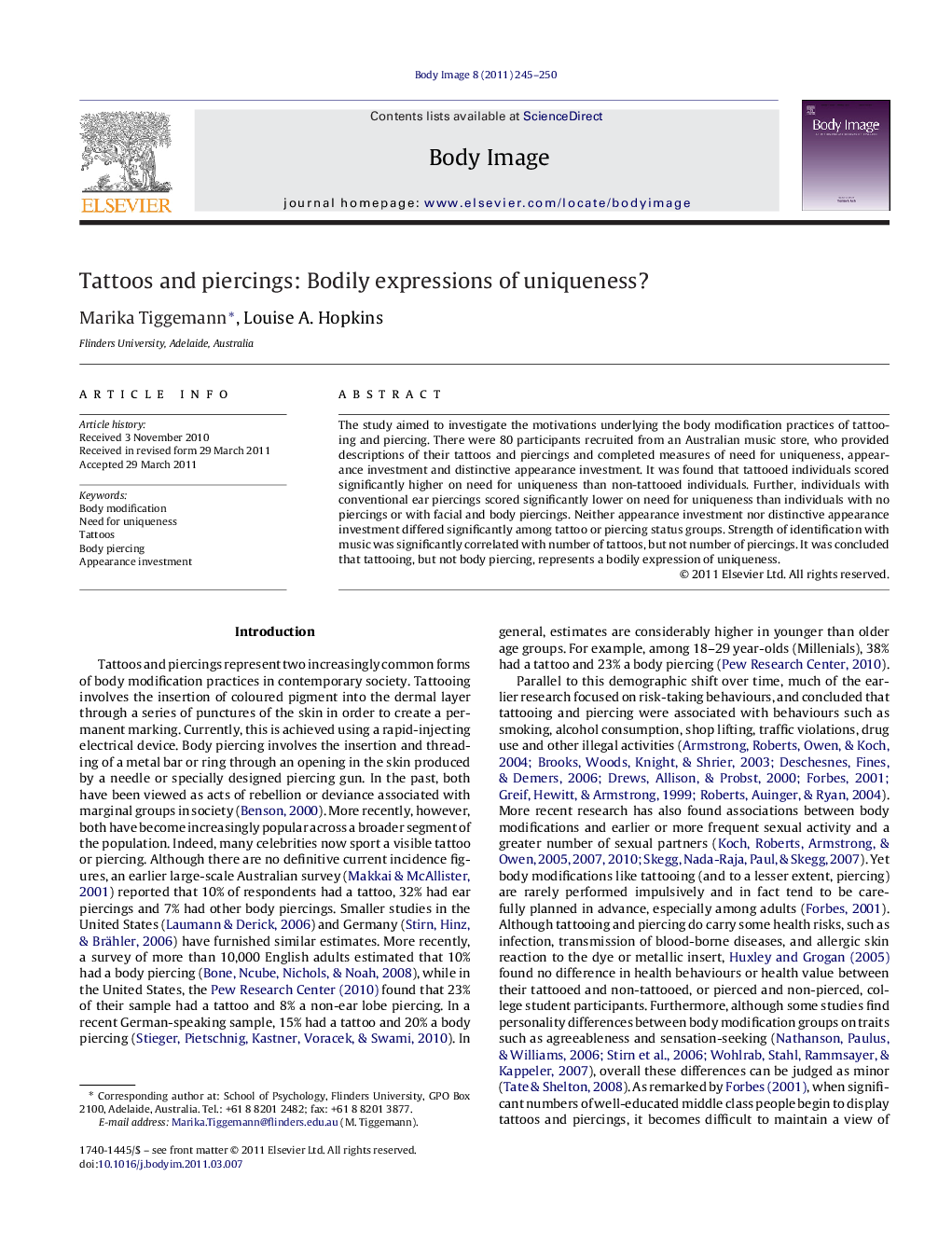| Article ID | Journal | Published Year | Pages | File Type |
|---|---|---|---|---|
| 902933 | Body Image | 2011 | 6 Pages |
The study aimed to investigate the motivations underlying the body modification practices of tattooing and piercing. There were 80 participants recruited from an Australian music store, who provided descriptions of their tattoos and piercings and completed measures of need for uniqueness, appearance investment and distinctive appearance investment. It was found that tattooed individuals scored significantly higher on need for uniqueness than non-tattooed individuals. Further, individuals with conventional ear piercings scored significantly lower on need for uniqueness than individuals with no piercings or with facial and body piercings. Neither appearance investment nor distinctive appearance investment differed significantly among tattoo or piercing status groups. Strength of identification with music was significantly correlated with number of tattoos, but not number of piercings. It was concluded that tattooing, but not body piercing, represents a bodily expression of uniqueness.
► People with tattoos scored higher on need for uniqueness than non-tattooed individuals. ► People with conventional ear piercings scored lower on need for uniqueness than individuals with no piercings or with facial and body piercings. ► Tattooed and pierced individuals did not differ from non-tattooed and non-pierced individuals on appearance investment nor distinctive appearance investment.
